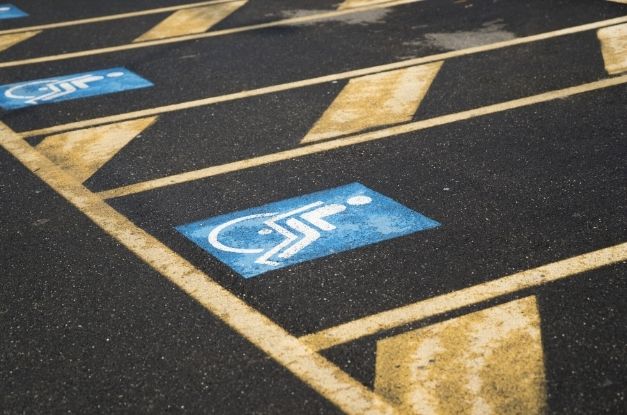In the grand scheme of things, a parking spot doesn’t seem terribly significant. However, if you have mobility issues due to age or you must drive a vehicle equipped with a ramp, a parking spot can potentially determine whether you can get into a store or make it to an appointment.
Unfortunately, misunderstandings about handicap parking lead to people misusing these parking spots and making things more difficult for those who really need them. To bring light to this topic, we have compiled a guide to handicap parking etiquette.
Don’t Use a Spot Without a Pass
To park in a handicap parking spot, you need a disabled parking placard or license plate. Your state’s Secretary of State office issues these passes. Most states have three types of parking passes:
- Temporary Placard: These are for drivers with medical conditions that are expected to improve. A temporary placard is valid for one to six months.
- Organization Placard: These are for organizations that transport people with disabilities. Owners must renew them every four years.
- Permanent Placard or Plate: These are for drivers with conditions that are not expected to change. Owners must renew them every four years on their birthday.
Among permanent placards and plates, there are two further distinctions: meter-exempt and non- meter-exempt. Meter-exempt placards exempt users from paying fees at parking meters when they have a condition that would make accessing the meter difficult. Non-meter-exempt placards do not exempt you from fees.
Properly Display Your Parking Placard
A parking placard does a driver no good when those driving by can’t see it. If the placard is not visible, you may receive a fine. The best way to display your placard is to hang it from your rearview mirror or place it on the vehicle’s dashboard.
Don’t Park in the Access Aisles
The diagonally striped areas beside the parking spots are access aisles intended to make it easier to exit and enter the vehicle. However, those who aren’t aware of this fact often mistake the spaces for emergency parking. Parking in these places can make it impossible for side-loading wheelchair vans to extend their ramp, leaving wheelchair users unable to get into or out of their cars.
Be Courteous to Others Using Handicap Spots
There are many reasons a person may need to use a handicap parking space, and these reasons aren’t always as evident as a person needing a wheelchair. Proper handicap parking etiquette states that it’s better not to judge a person who parks in a handicap spot even if they don’t “look” like they have a disability. If the driver truly doesn’t have a parking placard, there are apps available that allow you to report them.
























